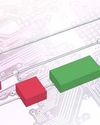
A cryptocurrency wallet is a digital tool that allows individuals to store, manage, and interact with their cryptocurrencies. Cryptocurrency wallets play a crucial role in the blockchain ecosystem, as they are essential tools for collecting, storing, and transacting cryptocurrencies. These wallets come in various forms, each with its characteristics and use cases. Different cryptocurrency wallets commonly used in the blockchain space are shown in Figure 1.
How to choose the right cryptocurrency wallet
Choosing the right cryptocurrency wallet depends on your specific needs, security concerns, and level of expertise. For long-term storage of significant cryptocurrency holdings, hardware wallets are recommended. Mobile and desktop wallets may be more suitable for everyday transactions and quick access. Regardless of the type, it’s crucial to follow best practices for security, including keeping private keys safe and regularly backing up wallet information. Here is a list of all the criteria for the selection of the right cryptocurrency wallet.
Security: Consider a hardware wallet or a well-secured desktop wallet for long-term storage of significant assets. Always enable additional security features like two-factor authentication.
Ease of use: If you’re new to cryptocurrencies, a user-friendly mobile wallet like Trust Wallet may be a good starting point.
Supported assets: Ensure the wallet supports the cryptocurrencies you plan to hold. Some wallets specialise in specific networks, while others offer broader compatibility.
Backup and recovery: Learn how to create a secure backup (usually a seed phrase) and recovery process for your chosen wallet. This is critical in case you ever lose access to your wallet.
هذه القصة مأخوذة من طبعة October 2023 من Open Source For You.
ابدأ النسخة التجريبية المجانية من Magzter GOLD لمدة 7 أيام للوصول إلى آلاف القصص المتميزة المنسقة وأكثر من 9,000 مجلة وصحيفة.
بالفعل مشترك ? تسجيل الدخول
هذه القصة مأخوذة من طبعة October 2023 من Open Source For You.
ابدأ النسخة التجريبية المجانية من Magzter GOLD لمدة 7 أيام للوصول إلى آلاف القصص المتميزة المنسقة وأكثر من 9,000 مجلة وصحيفة.
بالفعل مشترك? تسجيل الدخول

Amazon Bedrock: A Boon for the Financial Services Industry
Amazon Bedrock is a fully managed service that provides access to foundation models from top AI providers, enabling organisations to build and scale generative AI applications. It is specifically designed to bring AI solutions to the financial sector. Let's explore all that it can do...

Quantum-Safe VPNs: The Future of Secure Communication
As quantum computing continues to advance, it poses a significant threat to traditional cryptographic algorithms that secure our digital communications. Virtual private networks (VPNs), which rely heavily on encryption, are particularly vulnerable. Quantum-safe VPNs utilise post-quantum cryptographic algorithms to protect against quantum attacks.

Popular Open Source Toolkits for Quantum Machine Learning
Quantum machine learning is becoming increasingly popular due to its ability to solve the complex problems of the AI age. Here are a few open source libraries and frameworks that help with quantum computations.

Quantum Computing: Harnessing Open Source for Innovation and Accessibility
We explore how open source initiatives are shaping the future of quantum computing, making it more accessible and driving innovation through collaboration.

How Quantum Computing Differs from Classical Computing
Despite being in its infancy, quantum computing has numerous potential applications in modelling, cybersecurity, AI/ML, and other fields. But how do quantum and classical computing compare with each other? Let's find out...

From Bits to Qubits: The Growth Story of Quantum Computing
Quantum computing may still be in the early stages of evolution, but its potential impact on everyday life is significant. We delve into the key concepts behind it, the reasons for its rapid growth, and how global advancements are shaping its future.

Pytket: A Comprehensive Guide to Quantum Circuit Design
Pytket stands out as a powerful toolkit in the realm of quantum computing, offering a suite of features that cater to both researchers and industry practitioners. Its key strengths include optimisation, platform-agnostic support, flexible quantum circuit design and hybrid algorithm support. These features make Pytket a versatile tool for various quantum computing applications, from machine learning and cryptography to optimisation problems in industrial settings.

Cirq: The Open Source Framework for Programming Quantum Computers
Explore the key features, capabilities, and impact of Cirq, an open source quantum computing framework developed by Google, on the quantum programming landscape.

The Role of Open Source in Accelerating Quantum AI
Here's an overview of how open source frameworks are being utilised to build quantum machine learning models, including quantum neural networks and quantum kernel methods. The challenges and future directions in the quantum AI landscape are also discussed.

Quantum Machine Learning: An Overview
Quantum machine learning (QML) is a burgeoning field at the intersection of quantum computing and artificial intelligence. In recent years, the integration of quantum mechanics with machine learning algorithms has sparked substantial interest among researchers and technologists alike. Here's a quick look at the essentials of creating quantum algorithms for AI models, their practical use cases on open source platforms, and best practices for implementing these advanced algorithms.